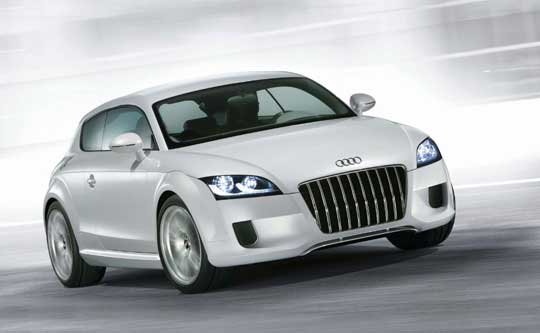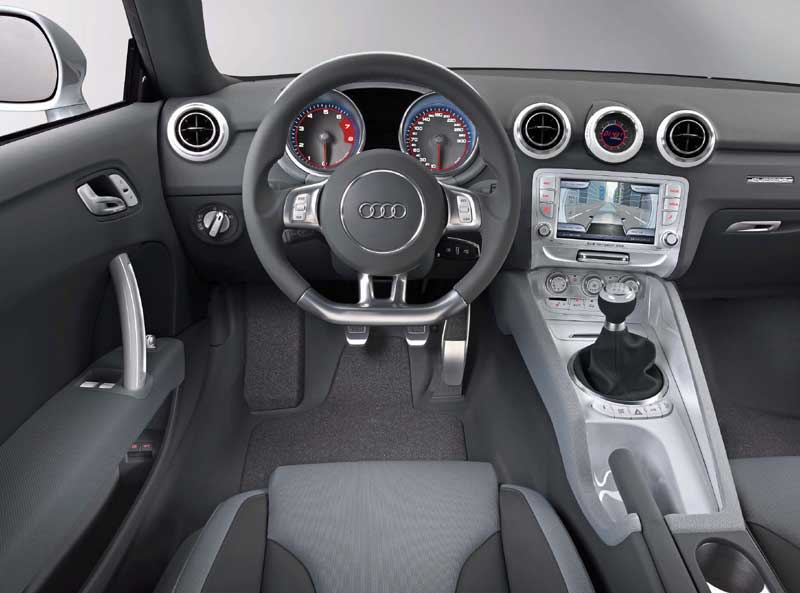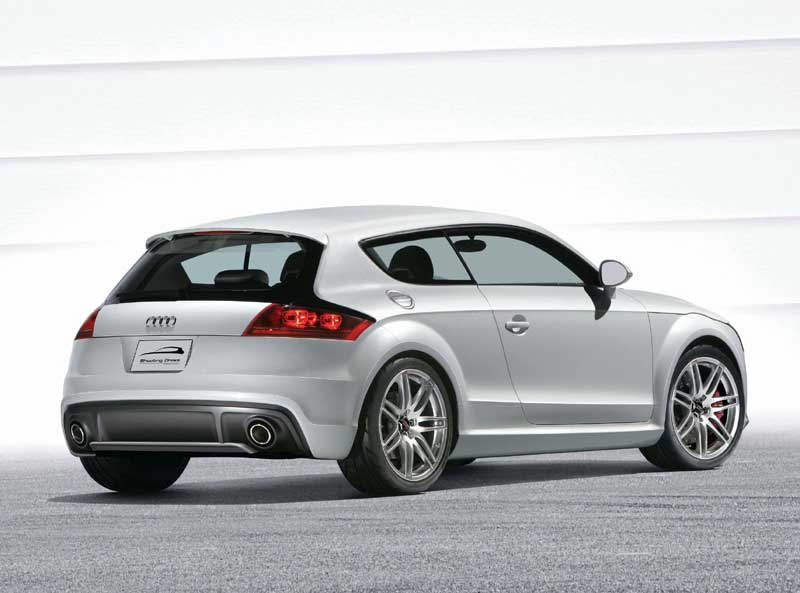
Brimming with state-of-the-art electronics, Audi will be unveiling a spacious sports hatchback concept with a 250 bhp, 3.2-litre six-cylinder engine and quattro permanent four-wheel drive. The study vehicle sprints from 0 to 100 km/h in just 6.0 seconds, and its top speed is electronically governed at 250 km/h.
The Shooting Brake Concept features a raft of technical innovations for Tokyo. These include the adaptive damping system Audi magnetic ride, an evolutionary version of navigation system plus with touch screen monitor and character recognition, and the new LED headlight technology.
Its front end is characterised by the striking single-frame radiator grille with dominant horizontal slats in chrome. The tapered shape at the front - further accentuated by prominent air inlets at the sides - and the dynamic cut of the clear-glass headlights give the face its decidedly forceful character. A presence that echoes the characteristic front-end design of the current A4 racing models in the DTM and the Audi RSQ study.
One new element in the portfolio of design features is the upward swoop behind the rear side window. This, together with the wide C-post, accentuates the prominent rear end. This is where the visual emphasis of the Shooting Brake Concept, painted in Bionic White, pearl effect, is to be found: the flat trapezoid of the rear window and the pronounced arching, convex shape of the panel forming the luggage compartment lid are the opposite extreme to the flat nose end. They give the vehicle a crouched appearance, as if ready to leap.


Interior Technology
Above the centre console angled towards the driver, two circular air outlets with star-pattern slats bracket a chronograph that can display information in either analogue or digital form, as preferred.
This technology uses an organic polymer material that appreciably improves presentation and ease of reading. Compared with the conventional liquid crystal displays (LCD), an organic light emitting diode (OLED) monitor is substantially easier to read, above all with the sun shining on it and when viewed at an angle. The content displayed on the monitor can still be made out from an angle of 170 degrees. Other advantages of OLED are its shallow installation depth and very short response times, as well as much lower energy consumption than LCD displays.
The MMI terminal of the DVD radio and navigation system plus, with optical and acoustic route guidance, has been redesigned. The ergonomically optimised architecture of keypad and display is inspired by the successful Multi Media Interface configuration in the Audi A8. Here, the system features an array of new functions such as innovative 3D screen navigation with touch screen monitor and character recognition that permits detailed inputs using a PAD pen.
An enhanced version of the DVD screen-based 'navigation system plus' offers special operating functions and a new screen presentation. Audi uses touch screen technology for the first time here. The driver can activate the basic architecture of the MMI screen directly by touching the function panels in the display.
The new system generation permits operation of the navigation menu by direct via the monitor. Instead of having to compose them one letter at a time from the menu, the driver can simply write them on the monitor with their finger. Alternatively, a remote control with pressure-sensitive surface can be used to make inputs, as on a PDA computer. The input monitor pops up out of a slot beneath the centre display at the push of a button.
The special feature is that the system is not only capable of reading in handwriting, but can also identify a wide variety of scripts. The computer is equally able to read the conventional Latin alphabet and Japanese characters.
Another new aspect is the scope provided for choosing between two different navigation modes. Those who prefer the "Tour" mode can view the route on the monitor from an appreciably enhanced, three-dimensional bird's-eye perspective. The driver can take photos of destinations with a camera at the front of the car and store these as visual route markers.
Text: Classic Driver
Photos: Audi
ClassicInside - The Classic Driver Newsletter
Free Subscription!



